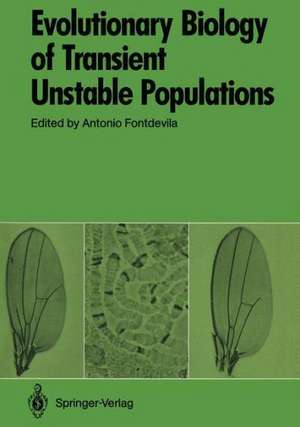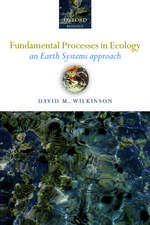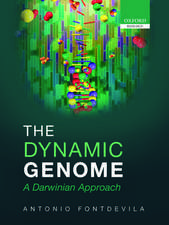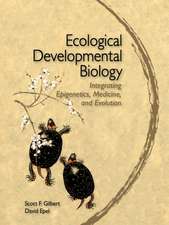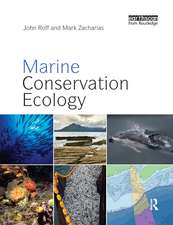Evolutionary Biology of Transient Unstable Populations
Editat de Antonio Fontdevilaen Limba Engleză Paperback – 12 dec 2011
Preț: 643.16 lei
Preț vechi: 756.65 lei
-15% Nou
Puncte Express: 965
Preț estimativ în valută:
123.07€ • 128.84$ • 101.83£
123.07€ • 128.84$ • 101.83£
Carte tipărită la comandă
Livrare economică 07-21 aprilie
Preluare comenzi: 021 569.72.76
Specificații
ISBN-13: 9783642745270
ISBN-10: 364274527X
Pagini: 308
Ilustrații: XI, 293 p.
Dimensiuni: 170 x 242 x 16 mm
Greutate: 0.49 kg
Ediția:Softcover reprint of the original 1st ed. 1989
Editura: Springer Berlin, Heidelberg
Colecția Springer
Locul publicării:Berlin, Heidelberg, Germany
ISBN-10: 364274527X
Pagini: 308
Ilustrații: XI, 293 p.
Dimensiuni: 170 x 242 x 16 mm
Greutate: 0.49 kg
Ediția:Softcover reprint of the original 1st ed. 1989
Editura: Springer Berlin, Heidelberg
Colecția Springer
Locul publicării:Berlin, Heidelberg, Germany
Public țintă
ResearchDescriere
An overview of speciation theory reveals an increasingly held view that many events leading to the origin of new species occur in transient, unstable populations. A transient, unstable population should be under stood as a fast episodic phase in a population subjected to genetic and environmental factors that tend to disrupt its cohesive, balanced genome architecure, thus enhancing its probability to produce a new species. Striking the core of Darwinian thought, some authors claim that these· processes may be non-adaptive. Among the environmental factors one may cite biotic (e.g. resource availability) and abiotic (e.g. temperature) stress conditions that break up the population stability producing random, unpredictable changes in population size, population trait distribution, breeding structure, inter- and/or intrapopulational hybridization, etc. Genetic factors consist of those events that induce rapid changes in genetic expression and/or that determine reproductive isolation, such as substitutions, insertions, deletions, duplications, transpositions, gross chromosomal rearrangements, recombination and, in general, any mechanism that changes the regulatory pattern of the organism or the balance of its meiotic system. Both kinds of factors are often intertwined in a complex net and may influence each other.
Cuprins
A Founder, Colonizing and Bottleneck Populations.- A. 1. Theoretical Framework.- Phenotypically Plastic Characters in Isolated Populations.- Multivariate Morphometrics of Bottlenecked Populations.- Niche Overlaps and the Evolution of Competitive Interactions.- Marginal Populations in Competitive Guilds.- A. 2. Experimental.- Flush-Crash Experiments in Drosophila.- Founder Effects in Colonizing Populations: The Case of Drosophila buzzatii.- Mating Probability, Body Size and Inversion Polymorphism in a Colonizing Population of Drosophila buzzatii.- Colonization and Establishment of the Paleartic Species Drosophila subobscura in North and South America.- Short Range Genetic Variations and Alcoholic Resources in Drosophila melanogaster.- The Variance in Genetic Diversity Among Subpopulations is More Sensitive to Founder Effects and Bottlenecks Than is the Mean: A Case Study.- B Evolutionary Mechanisms.- B. 1. Molecular.- Mobile Genetic Elements and Quantitative Characters in Drosophila: Fast Heritable Changes Under Temperature Treatment.- The Potential Evolutionary Significance of Retroviral-like Transposable Elements in Peripheral Populations.- Paradoxes of Molecular Coevolution in the rDNA Multigene Family.- B. 2. Chromosomal.- Two Ways of Speciation.- Karyotypic Repatterning as one Triggering Factor in Cases of Explosive Speciation.
